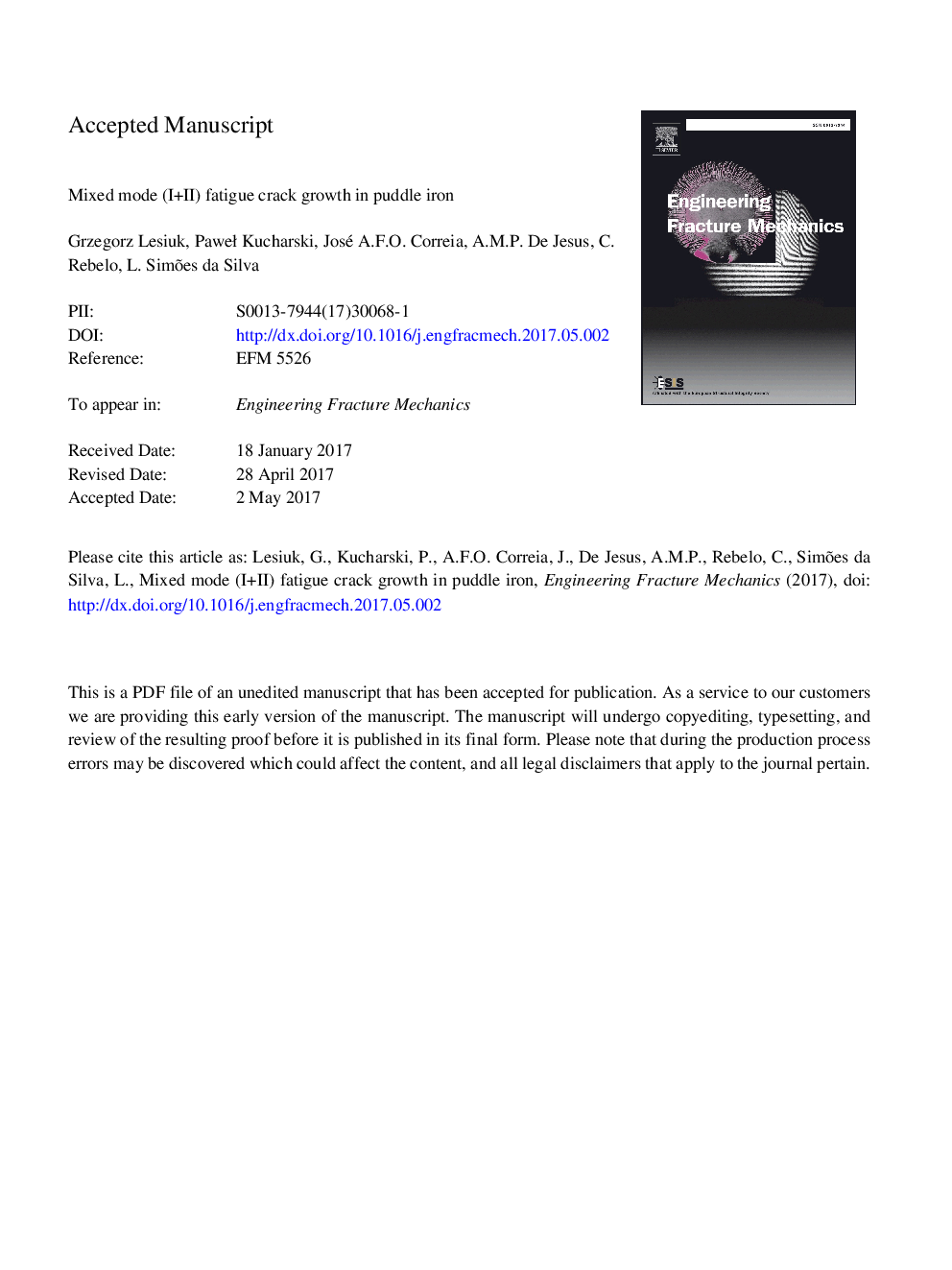| Article ID | Journal | Published Year | Pages | File Type |
|---|---|---|---|---|
| 7169386 | Engineering Fracture Mechanics | 2017 | 23 Pages |
Abstract
Structural components from structures such as bridge members are subjected to long operating periods of time. The problem of fatigue cracks is more interesting in existing bridge structures with active cracks. In the case of structures erected at the turn of the 19th and 20th centuries, cracks are frequently observed in these old steel metallic structures. The uniaxial fatigue crack growth hypothesis often leads to significant errors in predicting residual lifetime. A good example is the residual lifetime of the riveted joints in such a type of structures. On the other hand, the 19th century structures were erected using puddled iron or low carbon mild rimmed steel. Experimental results obtained by authors have shown that the fatigue cracks grow much faster than in modern equivalent steels. This phenomenon is supported by microstructural degradation processes. In this paper some examples of degenerated microstructures are presented. In order to fill a lack in experimental data in the literature, the results of a mixed-mode (I+II) fatigue crack growth have been presented and discussed on the background of existing fracture mechanics models, for old bridge materials. Data reduction techniques supported by Abaqus finite element simulations were adopted.
Related Topics
Physical Sciences and Engineering
Engineering
Mechanical Engineering
Authors
Grzegorz Lesiuk, PaweÅ Kucharski, José A.F.O. Correia, A.M.P. De Jesus, C. Rebelo, L. Simões da Silva,
